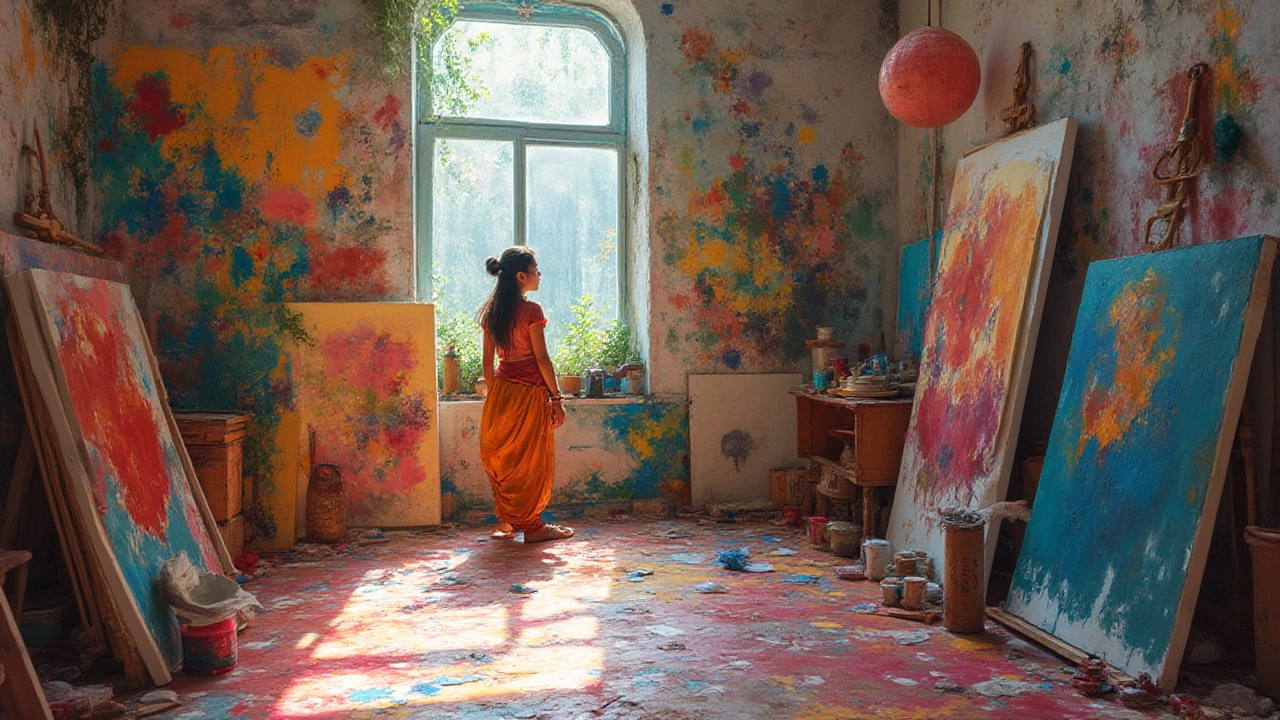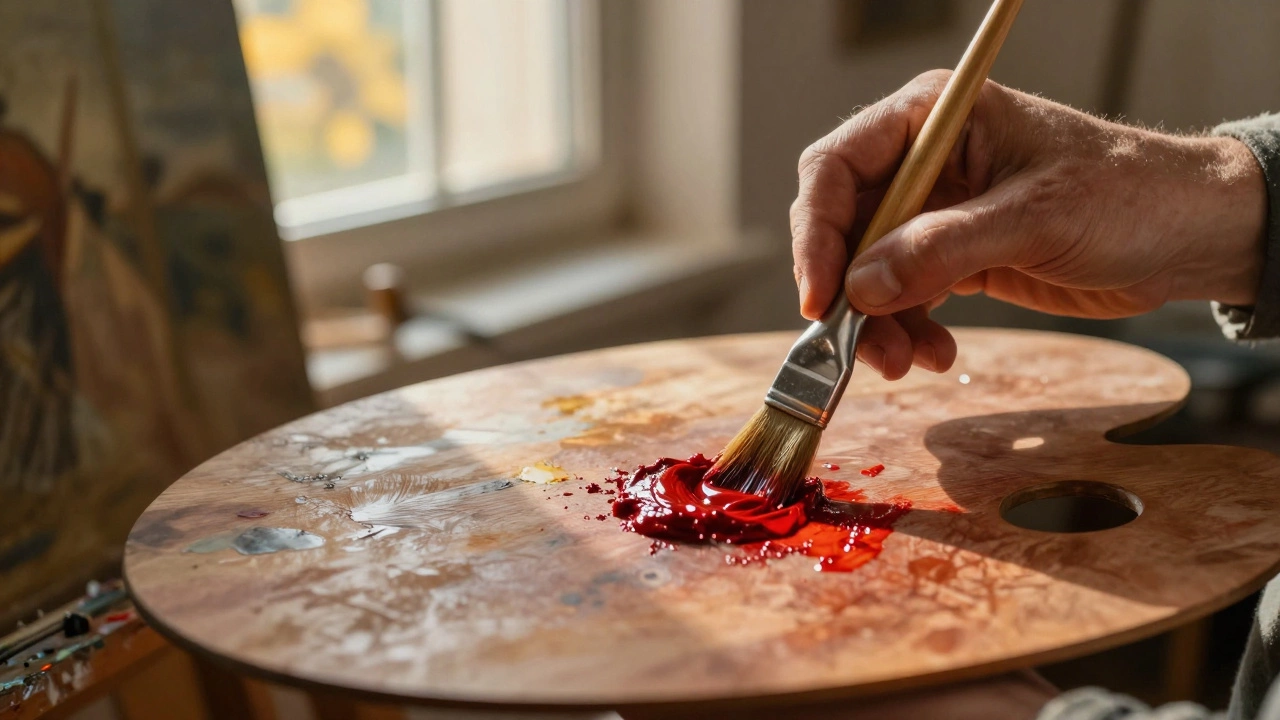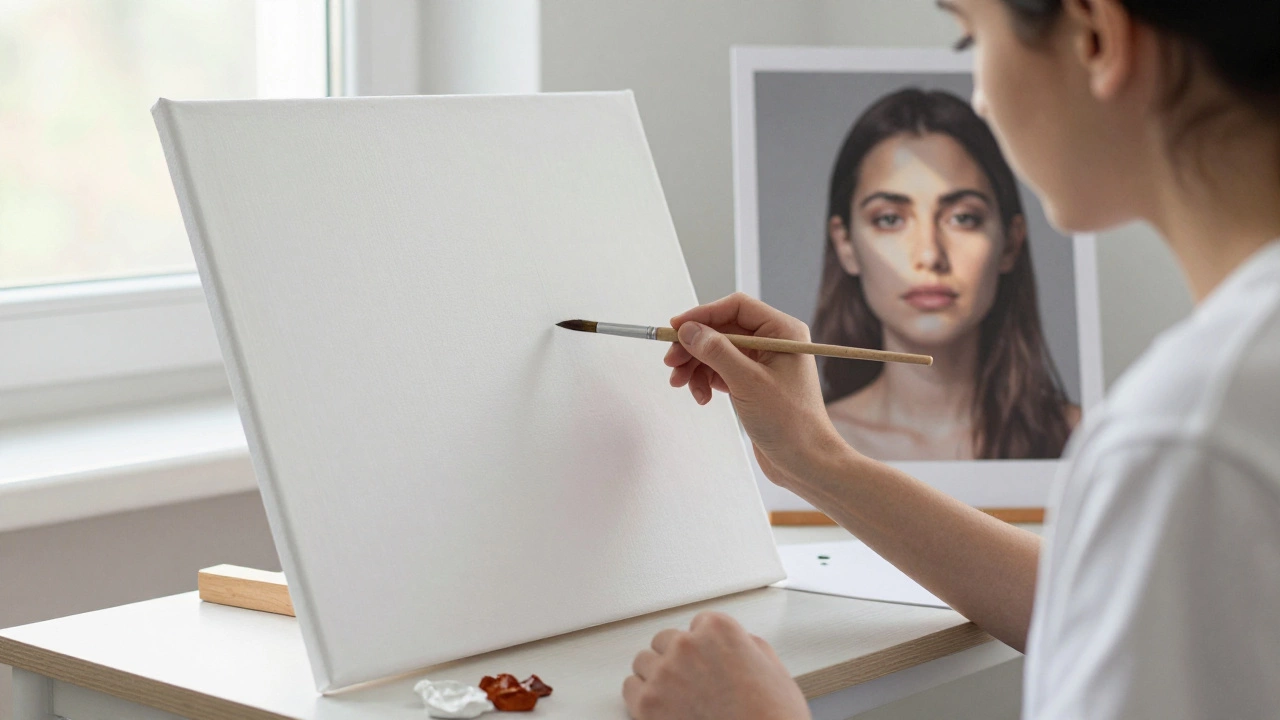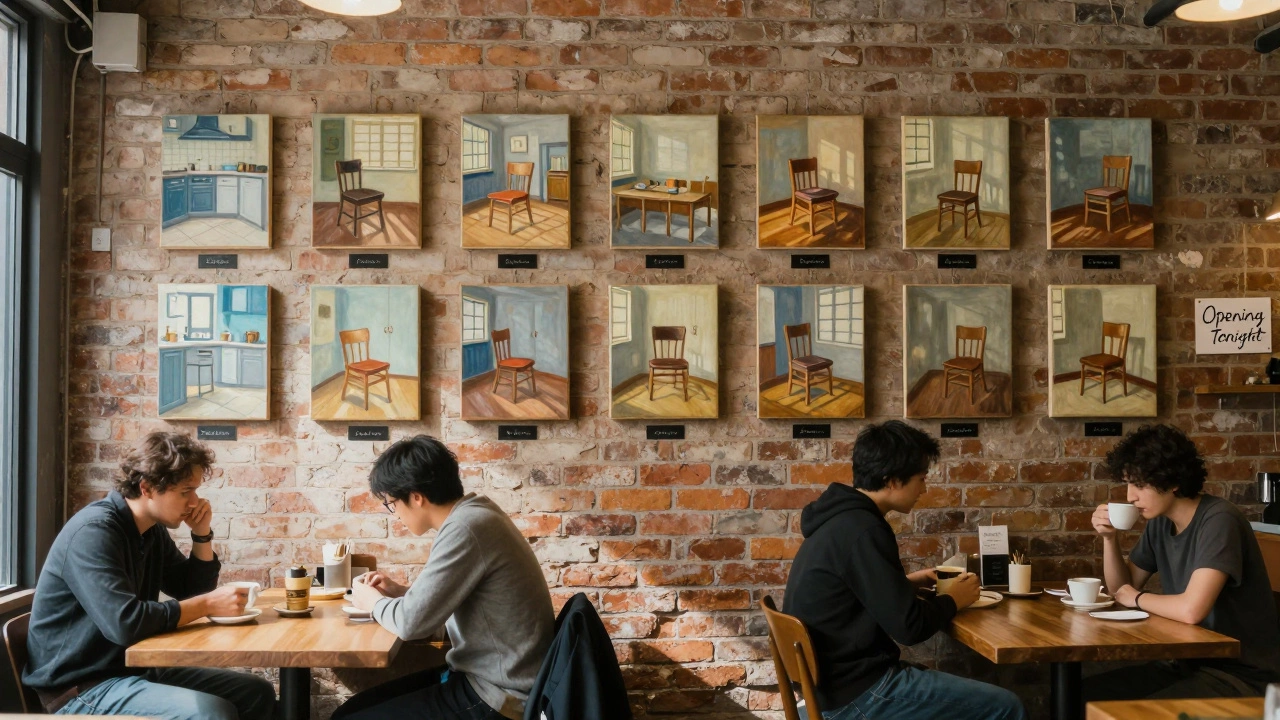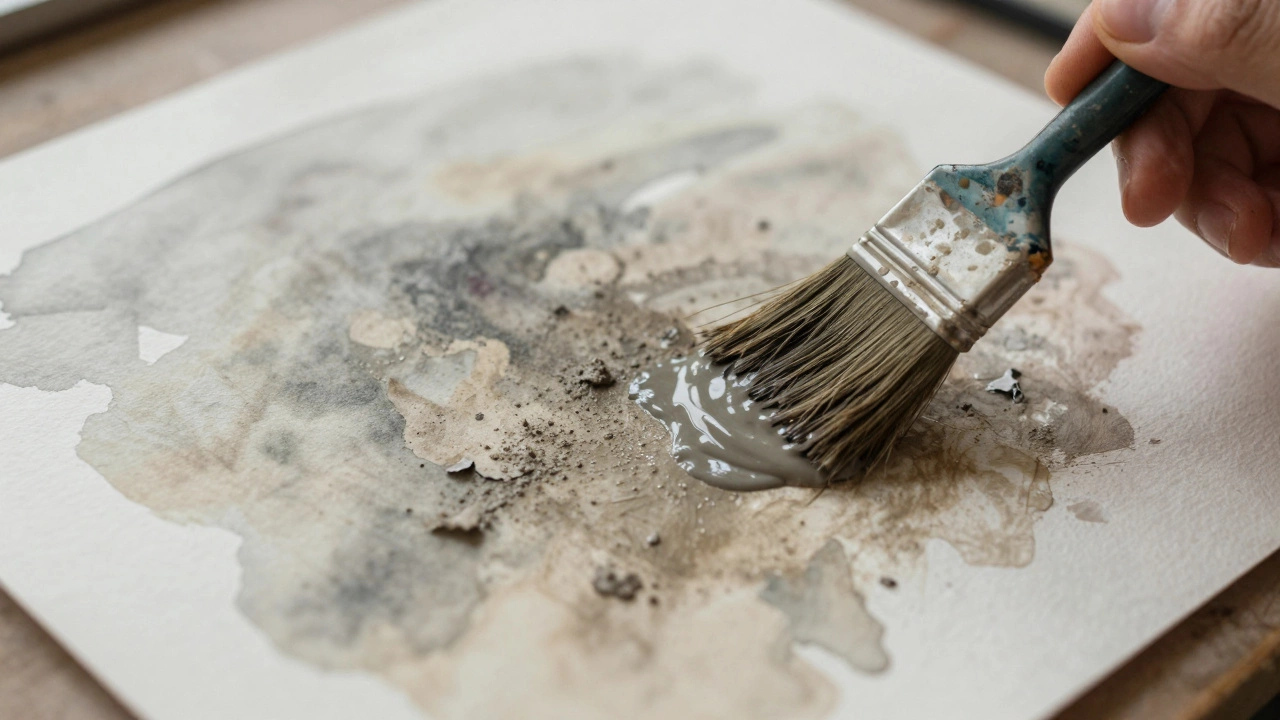Some artists see the world and try to paint it as it is; others look within and twist reality until it vibrates with energy no camera could capture. The best abstract artists turn that odd, buzzy feeling into something you can hang on your wall—or, sometimes, puzzle over for years. Good abstract art almost feels like music you can see but not quite explain. The question is, what’s the secret sauce? Why does one splashy painting feel like nonsense, while another lingers in your mind?
The Spark: Where Good Abstract Art Starts
Forget copying landscapes or faces. Good abstract art bubbles up from a different place. It begins with curiosity and play, not just paint. You need a willingness to tinker. Mark Rothko once said, “A painting is not a picture of an experience. It is an experience.” So, if you crave straight lines and tidy explanations, abstract art asks you to unlearn all that. Instead, step into a zone where mistakes become part of the masterpiece. The first trait every good abstract artist shares is this constant itch to explore and surprise themselves. If you’ve ever watched a kid with finger paints, you get it—the ability to take joy in pure color and chance. Yes, technique matters, but you can’t skip the spirit of play.
Then comes courage. Abstract art looks simple until it’s your turn to make it. I remember years ago, when I flung some paint on a canvas in a fit of frustration, Nathaniel peeked in, and I was both embarrassed and a tiny bit excited. That’s the magic zone. Because abstract artists risk looking silly. They trust that some instinct—color, shape, composition—will guide the way, even if step one looks like chaos.
And, of course, there’s intuition. The best abstract artists develop a knack for knowing when a painting is done and when it really isn’t. The temptation to tweak and adjust is always there. Sometimes, walking away is the bravest thing you can do.
Essential Techniques and Materials for Abstract Artists
Not every great abstract painting comes together with a single sweep of the brush. Good abstract artists are shameless experimenters—they pile up failed canvases, scrape back layers, pour, smear, even poke holes if that’s what the painting needs. This means you have to be a bit of a materials geek. Jackson Pollock didn’t invent dripped paint; he just made the entire floor his canvas. Helen Frankenthaler liked to soak her canvases in thinned paint, letting capillary action do the work of the brush. So, half the battle is picking paints, surfaces, and tools that match your style—or turn happy accidents into triumphs.
Brushes are a start, but palette knives, rags, and even old credit cards can create unique lines and textures. Some artists even use their hands, letting their fingers track movement and energy directly onto the canvas. Acrylics are favorites for beginners thanks to fast drying times, but oils provide richer color and longer blending. Then there’s collage—magazines, sand, metal bits—all fair game for someone bold enough. Try everything. There’s never one right way.
Then there’s the role of composition. You’d think composition would be less critical in abstract art, but the opposite is true. The strongest abstract work shows balance—through shapes, color, negative space. Joan Miró called it “the tension of opposites.” If too many shapes compete, nothing stands out; too few, and it’s boring. Many artists flip their work upside-down or squint to see the whole picture better. Some even photograph their piece and view it in black and white to check if the structure still holds together without color cues. This kind of analysis isn’t academic—it’s about trusting your gut, then training your eye so the feeling follows.
- Try painting to music and see how rhythm shapes your brushwork.
- Limit your color palette on purpose—sometimes forced limitations spark unexpected ideas.
- Rotate your canvas as you work to see new angles and surprises.
- Don’t ignore the "ugly phase"—every strong painting looks awkward before it clicks.
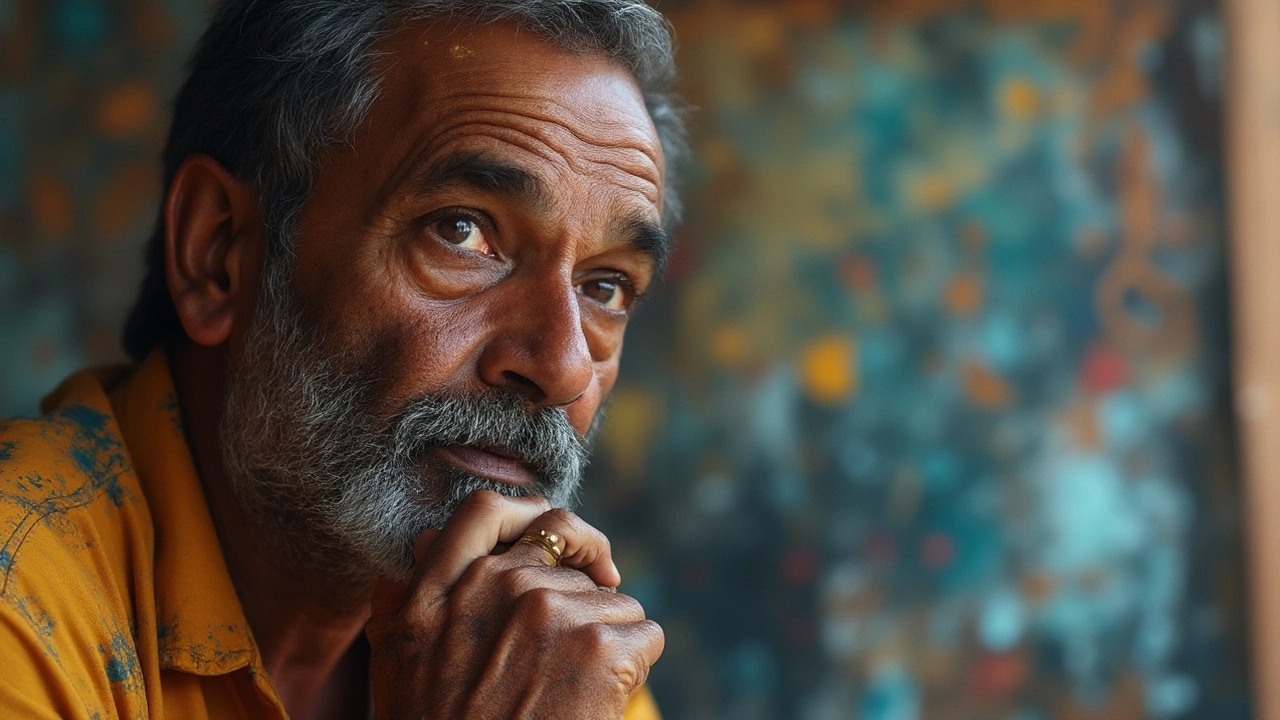
Personality Traits that Separate the Best from the Rest
Let’s be honest: it’s daunting to put your heart on a giant square of canvas and hope it means something. Many people can slap color down, but to become a memorable abstract artist, you need a few key traits beyond technical know-how. Resilience is a big one. Good abstract artists crowd their studios with failed experiments, not masterpieces. They learn to see those "unsuccessful" canvases as teachers, not shameful secrets to hide. If you quit at the first sign of things going sideways, you’ll never push through to something thrilling or genuine.
Another crucial ingredient? Openness. The best abstract paintings feel fresh because the artist wasn’t afraid to change directions halfway. Ruth Asawa, better known for her sculptures, once described play as serious work. Good abstract artists chase inspiration wherever it leads rather than sticking rigidly to a plan. It means staying alert to that spark when a mistake morphs into a new motif—or when a color choice suddenly unlocks the entire canvas.
Empathy matters too, weirdly enough. The most powerful abstract works aren’t self-obsessed—they make you, the viewer, feel something too. Abstract artists who pay attention to connections—to their own emotions, to changes in the world, even to viewers’ confusion—infuse their work with relatable human energy. I can’t count the times I’ve heard someone say, “I don’t get it, but it moves me,” standing in front of Kandinsky or Gorky. The artist planted a feeling, and it grows on its own terms.
Finally, a sense of humor keeps the process flexible. Good abstract artists laugh off the weirdness, the failed attempts, and the strange reactions. Louise Bourgeois described her art-making process as a way to lose, then find, herself. When you embrace that attitude, fear fades, and experimentation becomes fun.
Making Meaning Without Rules: How Artists Guide the Viewer
The sneakiest part about abstract art is that, unlike representational art, you can’t rely on the brain’s habit of labeling (“That’s a tree! That’s a dog!”). Instead, you have to grab the viewer some other way—color, rhythm, gesture, or even mystery. Good abstract artists know how to create a visual conversation, leading the viewer’s eye from one moment to another. Ever stand in front of a Rothko, towering fields of color, and feel your chest get heavy? That’s not just a trick of pigment. He obsessed for years over exactly which hues and ratios would soak the brain in emotion.
Strong abstract artists usually develop a set of personal symbols or visual habits—a unique "vocabulary" of shapes and energy marks. Lee Krasner worked through emotional storms on her canvases, turning wild marks into readable tension. Some artists build an entire series around one gesture or color, coaxing different stories out of the form each time. Others, like Yayoi Kusama, obsess over dots and repetition until a new world unfolds from repetition alone.
Titles help, too. They’re the only clue you get sometimes. Some artists keep it mysterious—think “Composition #4.” Others get playful or personal, dropping hints (“Midnight Garden,” or “Waiting at the Airport”). Your title’s a handshake: “Here’s how I want you to feel, just in case the painting leaves you adrift.”
But here’s the trick—while the best artists may start with their own life, emotions, or obsessions, the best abstract paintings don’t just reflect the artist; they trigger something personal in each viewer. That’s why two people can stand in front of Gerhard Richter’s color grids and walk away thinking about grief, hope, or chaos—each sees something different, but neither feels ignored.
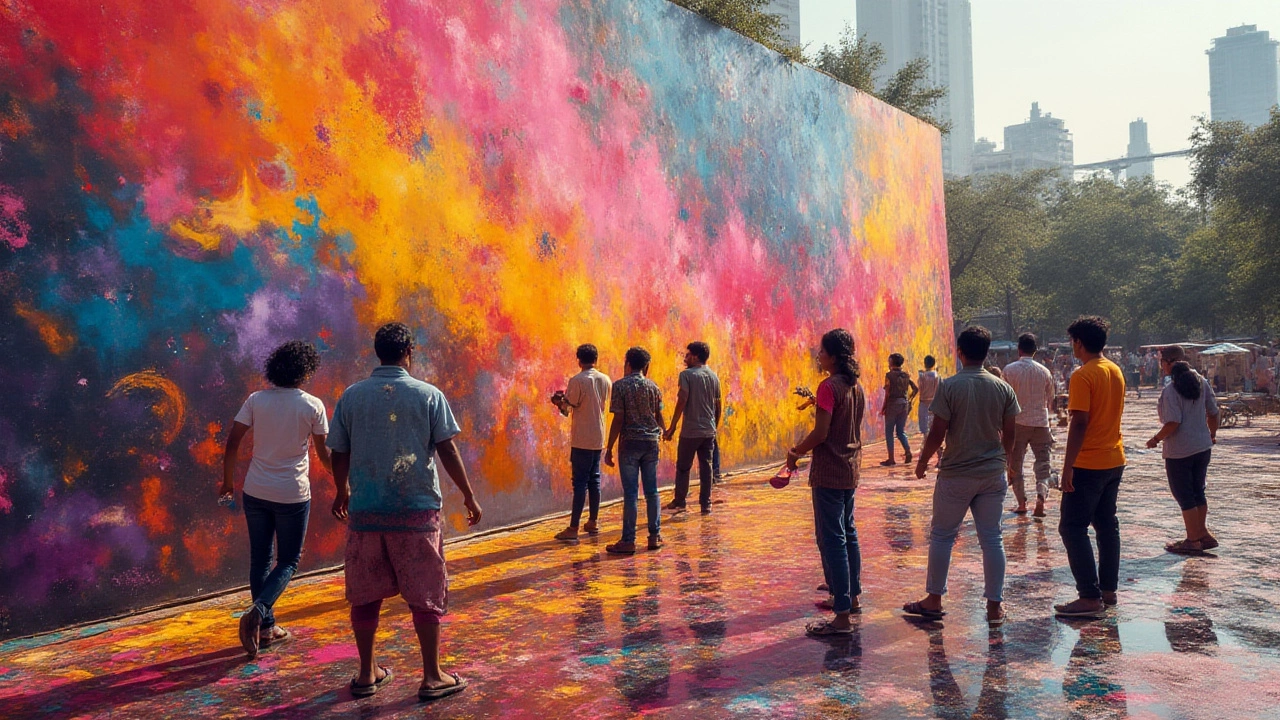
Tips for Aspiring Abstract Artists to Grow Their Craft
If you want to become the kind of abstract artist whose work sticks with people, start with noticing. Notice color combinations around you—a rust-red door next to peeling blue paint. Notice movement—how wind through leaves creates rhythm, or how headlights blur on a rainy street. The job is to translate those impressions into something you can’t put into words, only colors and forms.
Spend time with real paintings, not just filtered social media photos. Texture and scale matter. A painting that seems flat on a screen can feel magnetic in person—the brushwork, the shine, the size. Visit galleries. Linger with something you don’t understand, rather than skipping to what feels safe or familiar.
Don’t rush finding your own style. Many rising abstract artists mimic heroes at first—Pollock, de Kooning, Richter, you name it. That’s part of learning. Over time, your own sensibility seeps in; mistakes, preferences, the songs you play on repeat while painting—all these shape your individual voice. Embrace phases where your work looks “bad.” Those canvases are compost for future growth.
Make regular time for messing around with materials. Try everything: thick impasto, watery washes, even unconventional media. Don’t just think about big gallery canvases—try sketching abstract shapes in a tiny notebook, or arranging bits of colored paper into compositions you might later translate on canvas. The more fluent you get with different techniques, the more likely you’ll stumble upon an approach that suits you.
Share your work early and often, if you can stomach it. Half the experience of abstract art is the interaction—what people see, what surprises you about their reactions. Some artists even hang unfinished work where they can see it every day, waiting for time, light, or a passing question to nudge the painting forward.
Remember, abstract art rewards patience, courage, and the willingness to invent your own rules. If you crave a little guidance, try limiting yourself for a series—maybe three colors, one tool, a single size canvas. Sometimes, strange boundaries bring out the wildest originality.
And when in doubt, take a step back—or even upside-down—and see if the feeling you want is really there. If not, keep going. Like with most creative work, the only failure is stopping before the magic happens. In the end, that’s what really makes a good abstract artist: the drive to keep searching, keep playing, and keep finding new language for weird, beautiful feelings.
